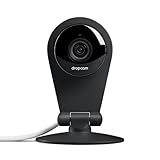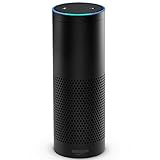News - 2016050902 - 7 common smart home myths that simply aren’t true

We’re truly living in the future now, and the advent of the smart home is only one of many developments propelling us forward. Unfortunately, because smart homes are new territory, many folks have misconceptions about what they are and why they exist.
For those who don’t know, a smart home is just a regular home that incorporates devices that have some level of connectivity. For example, thermostats that you can control with your smartphone or lights that shut off when you walk away from them.
These devices are called smart home products, but they’re no different than most other gadgets — and that’s only one of the many misconceptions that people have. Let’s clear up a few others!
1. “Smart Homes Are Just Gimmicks”
Any time there’s buzz around a new technology, it’s good to be skeptical. It’s good to show a bit of restraint and caution, mainly because so many interesting trends never actually amount to anything. They remain nothing more than gimmicks
And it’s true: some smart home products do exhibit signs of gimmickry.We’ve already covered a few smart home products that you should ignore and aren’t afraid to speak out when certain products are a waste of money.
But just because some smart home products are worthless doesn’t mean all of them are. In fact, a lot of them are intensely practical and well worth the investment.
Need examples? Start with the Nest Thermostat, which can drastically cut your energy bill. There are all sorts of reputable smart home products that actually provide tangible benefits.
Not to mention that you can integrate many devices with IFTTT, which opens up thousands of additional possibilities for improving day-to-day life. Remember when smartphones were gimmicks? Smart homes are on the same path.
2. “Smart Homes Are Too Expensive”
At face value, a lot of the smart home products that have come out over the past few years have some steep price tags. I mean, getting started with Philips Hue lights can cost $200 while a Belkin WeMo smart plug can cost about $50 per plug.


Price: $205.00
This obviously isn’t cheap — and nobody ever said that smart homes would be cheap. But if you think about it, it’s actually NOT that expensive, relatively speaking.
Not long ago, we explored how much a smart home would actually cost to implement if you only focused on the most practical items and stayed mindful of a budget. What did we find? Just over $1,000 for a full setup, up to $4,000 if you splurged for luxury options.


Price: $219.95
There are plenty of affordable smart home options out there. You just have to be smart about which ones you need. To compare, new windows can cost over $500 each and a bathroom remodel can easily cross the $10,000 threshold.
How do you keep from overspending? Just look into these important smart home features worth buying.
3. “Smart Homes Are Too Technical”
The phrase “smart home” might conjure up images of complex panels and circuitry, all requiring a healthy level of expertise to even start. As it turns out, most smart home products are way easier than you’d expect.
Yes, certain smart home products may involve some technical proficiency — such as the Nest Thermostat, which needs to be hooked up to your climate control system — but most other products are as easy as plug-and-play. That is not an exaggeration.
Now, if you want to get really futuristic and start controlling everything in your house with only your voice, then of course you’ll need to get down and dirty. But that’s all optional. Worst case scenario, you can just hire someone to do it for you!
4. “Everyone Needs a Smart Home”
On the opposite side of the aisle from skeptics, we have the fanatics — those who have discovered the greatness of the smart home and now endeavor to convert everyone else to join them. None of this is malicious, but it can be misguided.
The truth is that while smart home products can be amazingly useful, not everyone actually needs them.

For example, it makes more sense to smarten up your residence when its a house that you personally own. If you’re renting an apartment or condo, hooking up a Nest Thermostat could violate your lease. It’s also a nuisance to undo everything when you move out.
Bottom line: If you find a smart home product that you think might come in handy, go for it. If you look around but nothing suits your fancy, then forget about it. In the end, if you don’t need a smart home, then why force it?
5. “Smart Homes Make You Safe”
Smart security devices are growing in popularity, and if you haven’t seen one with your own eyes yet, just give it another year or two. This is one trend that’s brewing up a storm and is set to explode soon.
But for the skeptic, one question sits at the forefront: do smart security devices actually improve home safety?
And the answer is… it depends, but in most cases, not really.
We’ve highlighted some cool stuff before, like these smart door locks that can sense your presence and lock/unlock accordingly, or these clever home setups that can stop intruders. In fact, if you get creative, you can even use LED bulbs for home security.
But a lot of these methods can be done in non-smart ways, and some of them don’t actually increase security — they just offer peace of mind and the illusion of safety, which can still be worthwhile. Ultimately though, no smart home security system is foolproof.
6. “Smart Homes Have No Privacy”
A lot of folks who are against smart homes often claim that smart home products can compromise your privacy. And you know what? Technically, they aren’t wrong.
Not long ago, news broke that certain smart TVs were monitoring users, and smart TVs aren’t the only culprits. Other devices can potentially spy on you — and send your data to the NSA! That’s only one of several common smart home security concerns.

Price: $179.99
But just because some smart home products can violate privacy doesn’t mean thatall of them do. Or in other words, it’s possible to smarten up your home using only products that preserve your privacy.
As long as you avoid anything with a camera or microphone, you should be good to go. Of all the ways your privacy can be tracked, video and audio records are indeed the worst. But how much harm can a smart thermostat, smart sprinkler, or smart light bulb really do?
7. “Smart Homes Are Consumer-Ready”
Smart home technology is exciting. As we’ve explored time and time again, a lot of interesting things can be done with it — and while some of the products coming out are silly or ephemeral, many of them are productive and helpful.
But smart homes are far from becoming mainstream. We explained up above how these products actually aren’t that difficult to set up and incorporate, but they aren’t a walk in the park either.

The truth is that the smart home industry is still young. Very young. Sure, the idea of home automation has been around since the 1980s — perhaps earlier — but these consumer-ready products haven’t even been around for five years yet.
The industry has a lot of growing pains left to go through, such as the struggle to agree upon a single standard rather than flooding the market with dozens of protocols. It’s nice to have so many smart home hubs to choose from, but it’s also overwhelming and unnecessary.








